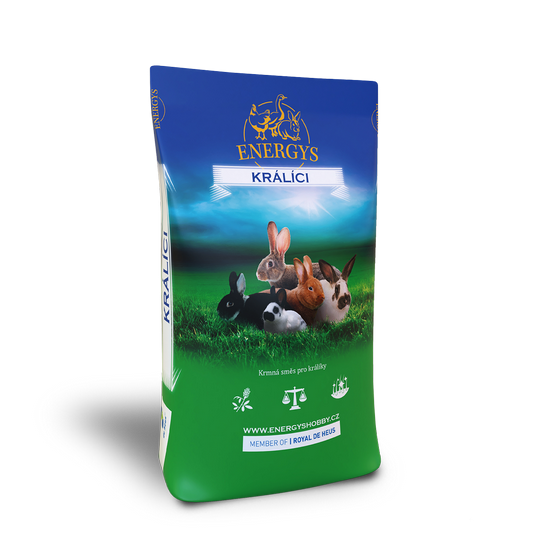Rabbits
Poultry
Laying hens
Quails
Guinea pigs
Pigs
Ostriches
Sheep and goats
Pigeons
Pheasants
Forest animals
Rabbit diseases and their treatment – Myxomatosis, Infectious Rhinitis
In this article we look at two common rabbit diseases, myxomatosis and infectious rhinitis.
MYXOMATOSIS
Clinical signs and transmission
The infection spreads throughout the body. We observe soft, blunt tumours (myxomas) as rounded spots, especially on the ears. There is also general swelling under the skin, and especially around the eyes, ears, anus and muzzle. The rabbit stops seeing, does not move, does not accept food and loses weight. The disease may be acute, but a latent form of the disease also occurs.
Acute disease also leads to high mortality. The latent form leads to other health problems such as increased susceptibility to Pasteurella bacteria, which is difficult to get rid of. The virus occurs in different forms with varying aggressiveness. In the external environment, the virus is very resistant and survives well.
Retrieved from
The sick rabbit excretes the virus with secretions from its nose and eyes. Contact between rabbits spreads the virus very quickly. Indirect transmission (via tools, feeders, etc.) is also possible. But the most important influence on transmission is from stinging insects (rabbit flea, mosquitoes, lice, etc.).
Prevention
Vaccination with vaccine is definitely recommended – MXT, MMVAC (combined and rabbit plague), Myxoren, Pestorin mormyx (combined vaccine). Consult your veterinarian for the most effective vaccination schedule.

Pasteurella (infectious rhinitis)
Pasteurellosis is one of the most common and serious rabbit diseases.
Symptoms
Symptoms may include sneezing, runny nose, yellow paws (from wiping the nose), runny eyes, diarrhea, abscesses (cheeks, lungs, breasts, uterus), mastitis, neck stiffness, and internal exuberance. Many rabbits are hidden carriers of pasteurella. The main source is breeding females. Pasteurella bacteria are highly variable.
The disease occurs in acute or chronic form. Acute manifestations of the disease are associated with high stocking densities, poor ventilation and high levels of ammonia and humidity.
Treatment and prevention
Treatment: oxytetracycline according to the severity of the problem 4 g per 10 litres of water. Tylmicosine in feed at 200 g/kg for 7 days, OL: 0 days. The creation of an antibiotic screen (tetracycline, draxin, possibly enrofloxacin) is also recommended. A vaccine can also be used for prevention: Pasorin. Consult your veterinarian for appropriate treatment.
Pasteurella is a gram-positive bacterium. Optimise the microclimate and reduce the amount of dust. Pasteurella bacteria can survive in the drinking water system, so it is very important to clean the system regularly. It can occur in combination with Bordatella multocida.
Related posts
10. April 2024
Keeping dwarf rabbits as pets is becoming increasingly popular. It does not require a lot of space and is ideal for people who live in smaller homes or apartments. Dwarf rabbits are also very friendly, so it’s no wonder that people are choosing them for this purpose more and more often. As with all animals,…
30. August 2022
In this article we will discuss several rabbit diseases – ear scab, tyzzer’s disease and heat stress.
24. August 2022
In this article we look at two diseases – e.Coli and enterocolitis.
2. August 2022
In this article we look at two common rabbit diseases, myxomatosis and infectious rhinitis.
13. July 2022
In the following article we will discuss rabbit plague – rhd or vhd (viral haemorrhagic disease of rabbits).
Related products

RABBIT DWART
Complete pelleted feed for dwarf rabbits with high digestibility. It contains a high proportion of fibre (high alfalfa and grass cake content) and a reduced sugar and starch content. Contains flaxseed, which has a positive effect on coat quality. Suitable for daily feeding. We recommend providing rabbits with safe fresh water and hay.

RABBIT CHAMPION
Feed for show rabbits, does not include Coccidiostat. A unique mix significantly supports the quality and growth of fur. Serve when moulting and at least two months before the start of the show season.

RABBIT GOLD FORTE
A premium feed mix in an ideal make up for gestating and breast feeding females. For the intensive fattening of rabbits for a period of up to 5 days before slaughter. It supports fast growth, meat content and an excellent state of health. It contains a coccidiostat which lowers the risk of mortality.

RABBIT KLASIK FORTE
Intended for the fattening of rabbits up to a point at least 5 days before slaughter. Suitable for attaining a high meat content and an excellent state of health. Thanks to its Coccidiostat content it lowers the animals mortality.

RABBIT KLASIK
For the final phase of rabbit fattening, a minimum of 5 days before slaughter. It supports high meat content and excellent taste qualities in rabbit meat. Without a coccidiostat.

RABBIT START
For young rabbits from the start of accepting feed to 4-6 weeks after weaning. The feed helps to significantly lower the death rate in the period around weaning. It contains a raised percentage of fibre and less starch. It does not contain a coccidiostat.
